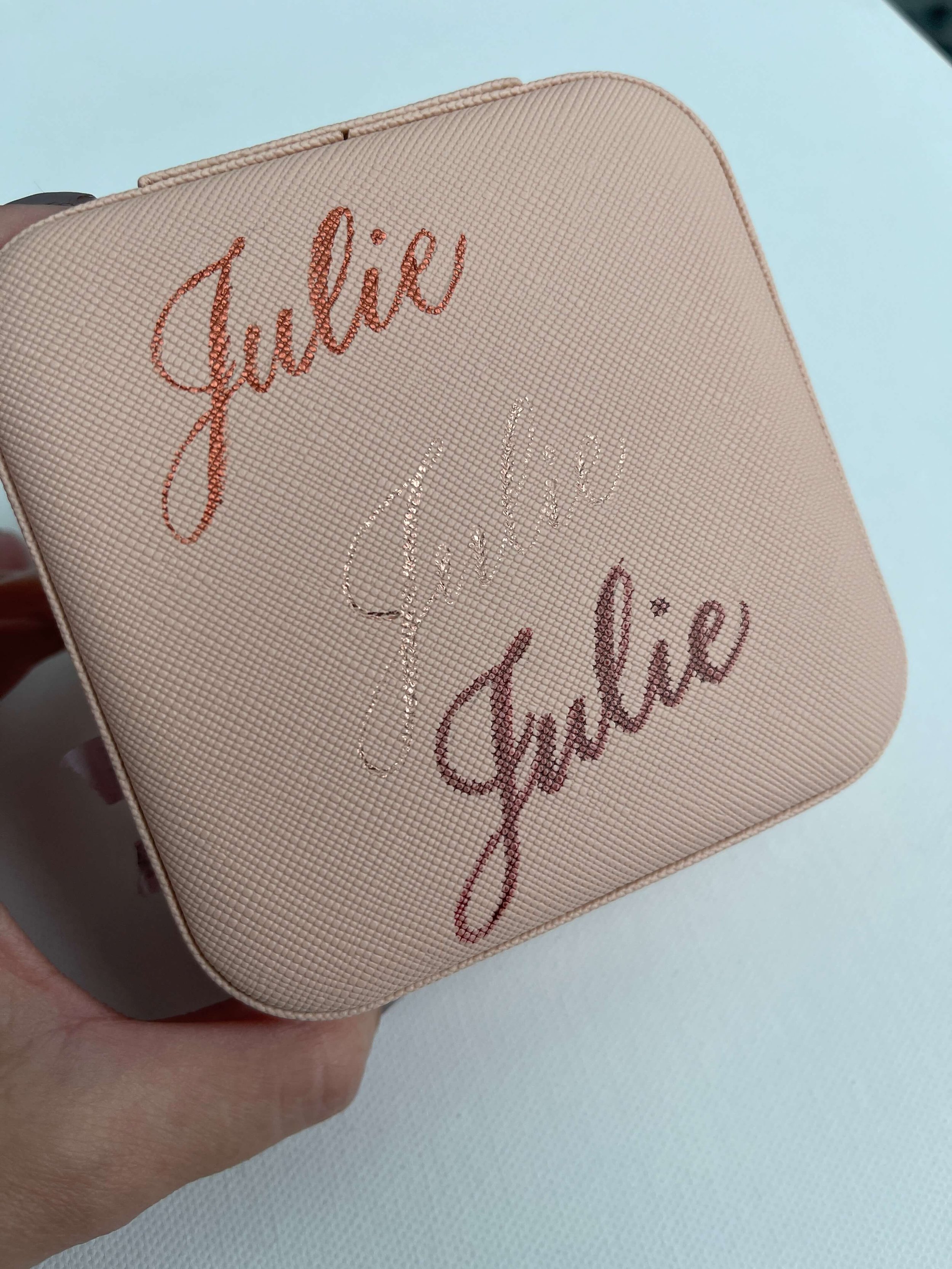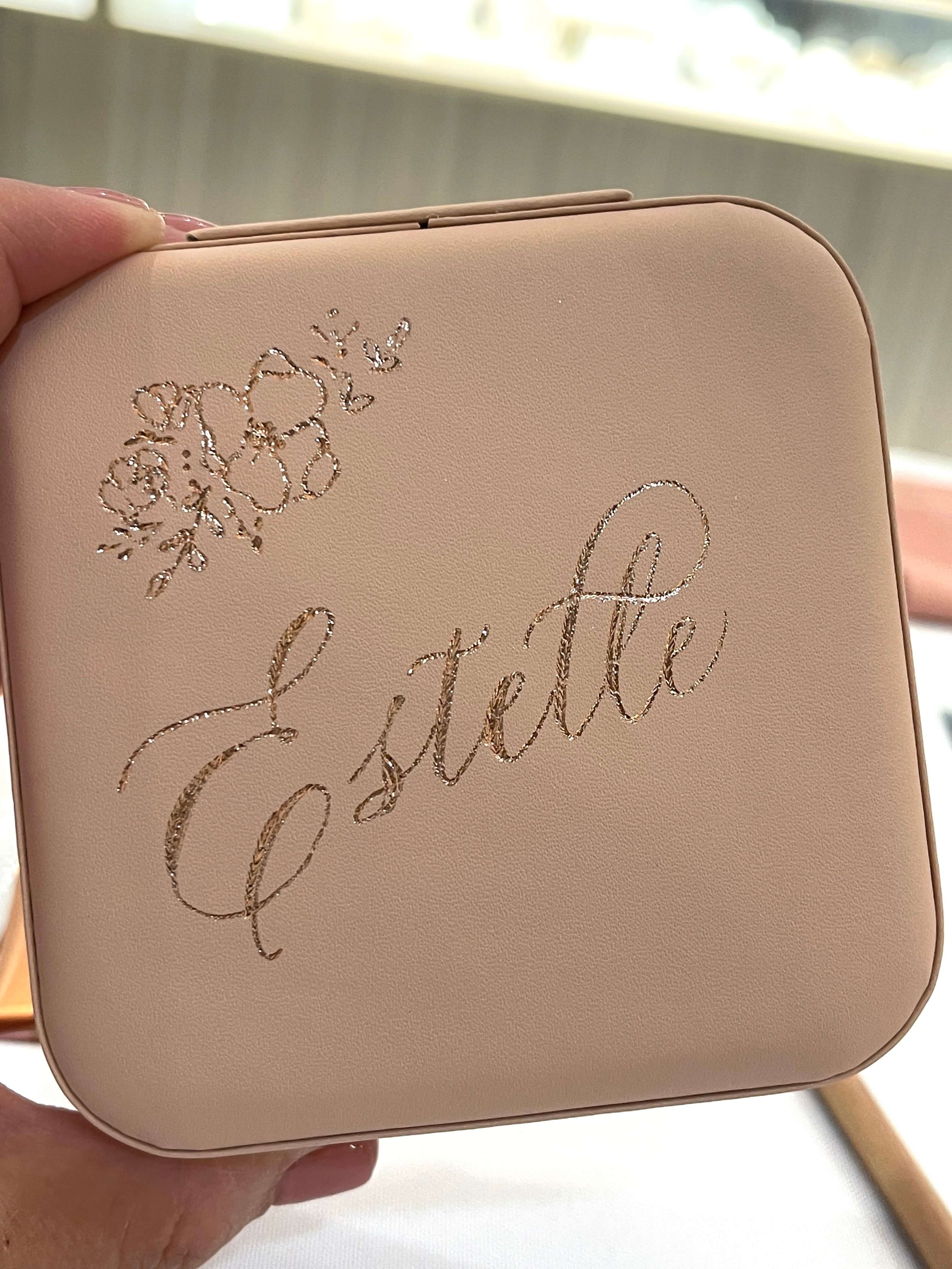You know how some sequels take a looooooong time to come out? I guess this is one of those—not quite Top Gun: Maverick (anyone else out there old enough to remember seeing it in the theater??), but here we go…
While I believe these to be practical, I fully acknowledge that most of the tips here are very subjective, much more than the tips in my previous post. So rather than say that I recommend doing these, I’ll say that the following are practices that work for me.
Attire #1: Layer up. Baby, it’s (sometimes) cold inside. Onsites for liquor brands usually happen in a grocery store or beverage depot—both have a refrigerated section, and there’s a good chance the work table will be right by it. Climate control is generally more comfy in department stores and boutiques, but the A/C can be a bit much in the summer. Also, work tables are often near entrances; those get drafty. Ask me what it’s like to write or engrave by the doors when it’s 10 degrees in Chicago. :P
Back in black. Keeping it simple and profesh. Not boring, though—zoom in on the pants and you’ll see they’re sparkly for the holidays. :)
Attire #2: Bet on black. This is a very much a personal preference, for the most part (I have had a handful of events in which a brand/store requested all black attire). I personally find it easier to dress in black. Black is a closet staple. I’ll accessorize with a scarf or brooch to zhuzh it up if I ever feel all-black is a bit plain. Might I look like an employee in some places? Sure, which brings me to my next point…
I like to know some basics about the store and department I’m in. I may not have an employee name tag, but while I’m onsite I know I will be approached like an employee. I take pride in being helpful. Even though I may not be expected to know some of these, I find that they sure help:
– Know where the bathroom is. When I’m working at a department store, I’m almost always asked this at least once or twice. If I’m on site for a long day, I want to know this for myself as well. On a similar note, if I’m stationed in an area of clothing it’s also good to know where the dressing room is. It only takes a minute to get this info, and it saves me from repeatedly saying something like, “Sorry, I don’t know, I’m just a calligrapher here for the day.” (Just…no.)
– Know the retail workers on the floor around you. In my experience, most of the workers make this easy anyway; my being there is meant to help them sell. Having a good rapport with other people just makes sense—it makes the workday go by more pleasantly/faster, they can help you address any difficult requests with customers, you can learn more from them about the items you engrave, etc. I enjoy returning to a store for an onsite and reconnecting with some of the workers I’ve met before, and it feels good when they’re happy to see me, too.
Arrive a little extra early. There are several good reasons for this: time to park, especially on busy shopping days; time to set up; and sometimes (not often, but it has happened more than once) I’ll show up and my presence is apparently a surprise to workers in the store. I’ve never been sent home due to any scheduling “unawares”, but I have had to make calls to booking managers after arriving, which takes a few extra minutes to get things sorted out before I can settle in. I’m someone who likes to be in my seat and ready to write by the start time.
Set your boundaries. This is probably the most subjective point in the post. As an artist, you need to know how much you are willing to stretch. For example, if you’re hired till 5pm, at 5pm are you: a) packed up and walking out, b) just starting to pack, or c) taking one last request? For me, it’s option b—it was c once, but let’s just say I learned why that didn’t work out for me. It’s a different and personal choice for everyone.
There are a variety of scenarios that will make you assess your boundaries—in time, in space, what you’re willing to write/engrave, etc. My only advice is know yours, how flexible you’re willing to be, and stick to them (or adjust them) as needed to be at peace with the work you do.
Know where to go…when someone’s gotta go. ¯\_(ツ)_/¯
Bonus: Meet other artists on site if there are any! I love meeting other calligraphers and other artists at events! If you’ve introduced yourself to me before, thank you. And if I introduce myself to you, please know that as happy as I am, I’m also working up some courage to do so (shy extrovert here). There’s a wonderful community of onsite artists out there, and meeting others has made this job as a calligrapher a much richer experience. I have found so many in the community to be a great source of support, knowledge sharing, and even mutual referrals.
That’s it for Onsites Part II. See you next time (hoping much sooner) to complete the onsites trilogy!









